The Easter Rising in Galway, 1916
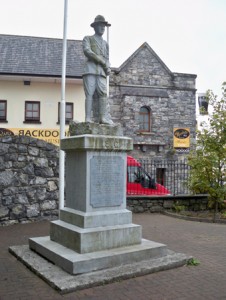
The Rising in rural Galway, by John Dorney
In April 1916, central Dublin became a battlefield, but with the exception of one or two isolated locations, the provinces failed to stir.
One of these locations was Enniscorthy in County Wexford where the insurgents took over the town for a week and the other was eastern County Galway, where there was what has been described as ‘the largest but arguably the most militarily pointless mobilisation in the country’.[1]
The Galway rebellion saw up to 500 local Volunteers mobilised, apparently with a considerable amount of support among the poor famers and labourers of the district, but poorly armed and without a clear plan they seemed to stumble from one action to the next before dispersing at the end of Easter Week.
In many ways it was more reminiscent of debacles like the Rising of 1867 than the high drama of April 1916 in Dublin. For all that, a look at the Rising in Galway gives us a valuable insight into political attitudes and class in rural Ireland in 1916.
The roots of rebellion
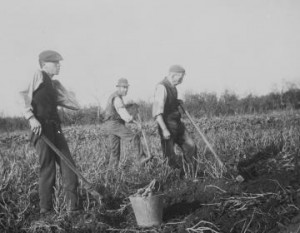
Galway was a large poor county in 1916, with a population of 182,000. Its west was sparsely populated, rugged, very poor and partly Irish speaking. Its east was more fertile, English speaking but with a ferocious tradition of agrarian struggle. In the middle was Galway city, a depressed town with a population of 13,000.[2]
Politically the county was dominated by the Irish Parliamentary Party and its affiliate the United Irish League (UIL), but it was the east of the county that was the base for the Irish Republican Brotherhood and militant nationalism.
The roots of Galway republicanism lay in the fusion of land and nationalist politics in the 1880s.
The roots of Galway republicanism lay in the fusion of land and nationalist politics in the 1880s. The IRB at that time adopted the cause of tenant farmers, for ‘fair rent’ and freedom from eviction and ultimately for land reform. Their expertise at clandestine activity and assassination was sometimes put to work, when fused with local secret societies at killing landlords, their agents, or ‘land-grabbers’.
Martin Newell for instance recalled, ‘My father, John Newell, was Centre of the I.R.B. for the Barony of Dunkellin in the l880s and, during that time, there was considerable agrarian trouble in the area.’ He recalled with pride his father’s part in the Land War of that era[3]
Interestingly also Newell explains a direct connection between the Land War era and his own activism. ‘The connecting links between that period and the founding of Sinn Fein in 1905 were certainly the Land League, the I.R.B. movement and the G.A.A’…
However the older IRB was split by the emergence of Sinn Fein as a political rival to the Irish Party and the UIL. Newell recalls,
’When the Sinn Fein movement was started in Galway in 1905, Thomas Kilkelly was I.R.B. Centre for the county, but he ‘stood by’ the Parliamentary Party. At that time, Tom Kenny of Craughwell, became I.R.B. Centre for the county Galway and he was appointed from Dublin to lead Sinn Fein in the county. He was assisted by Stephen Jordan, Larry Lardner, both of Athenry, and many others, and the younger men of the district rallied around him.’
There were thereafter regular brawls in villages like Craughwell between partisans of Sinn Fein and the UIL. Tom Kenny a blacksmith, became a centre both of agrarian agitation in the area and an associate of IRB leaders Tom Clarke and Sean McDermott in Dublin.[4]
Most east Galway Volunteers and IRB men seem to have been signed up by Kenny as much for agrarian as national action. Gilbert Morrissey of Craughwell, who followed his two brothers into Kenny’s IRB circle recalled, ‘I think Kenny’s main concern was to keep the spark of nationality alive in us until the opportunity came. This was not so difficult in County Galway because, in a sense, arms were never put away. If the people were not fighting against the British forces proper, they were making a fair stand against its henchmen, the tyrant landlord class, their agents and bailiffs, who were backed up and protected by the Royal Irish Constabulary.’[5]
If the people were not fighting against the British forces proper, they were making a fair stand against its henchmen, the tyrant landlord class, their agents and bailiffs, [and] the Royal Irish Constabulary’ Gilbert Morrissey.
In 1909, Kenny and some of his men shot dead an RIC constable in Craughwell who was escorting some bailiffs who were carrying out an eviction. Two IRB men were charged with the murder but later acquitted. As Newell recalled, ‘They were released in June 1910, and on their return home they got a great welcome from the people, even members of U.I.L. joined in.’[6]
The result of this low level conflict in the area was that there was already a reservoir of support for anti-state action among the local people.
Another result of continuous land agitation was that there were many small garrisons of armed RIC constables stationed around the east Galway countryside.
The local separatists routinely displayed open hostility towards the police, especially after they formed companies of the Irish Volunteers during the Home Rule crisis of 1912-14.
Gilbert Morrissey remembered that in 1915 they paraded their newly acquired ‘Howth Mausers’ rifles in the town of Athenry. When the police, ‘a District Inspector, Head Constable, two sergeants and 27 men’, surrounded them and attempted to seize the weapons, ‘our 0/C. ordered the twelve rifle-men to fire three rounds each’. The RIC District Inspector backed down and had a talk with Volunteers’ officer, Larry Lardner, ‘who told him that Carson’s Volunteers were carrying rifles in the north without hindrance and that we would do so in the south, and he got away with it. From that onwards we carried rifles and shotguns in the open.’[7]
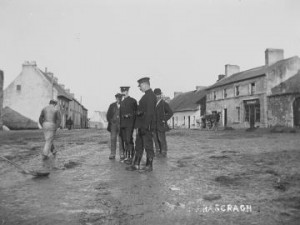
However, this militancy seems to have been strictly localised. In the rest of County Galway, the Redmondites of the UIL managed to retain control and when the Volunteer movement split over whether to back John Redmond’s call to support Britain in the First World War; most Volunteers in the County joined the Redmondite National Volunteers.
In the city of Galway there was also, as there were in all towns and cities in Ireland, a large number of working class families – known to the separatists at the ‘separation women’(due to their receiving the Separation Allowance), whose men folk had joined the British armed forces and who were bitterly hostile to the ‘Sinn Feiners’.
Martin Newell remembered,
On St. Patrick’s Day 1916, a parade of all companies of the Irish Volunteers in Co. Galway was held in Galway City … Practically every man on the parade was armed with some kind of weapon. The vast majority had shotguns and a few had rifles; others had long-handled pikes. The parade moved off through Shop Street, circled to the right and through Newcastle back to the assembly point. En route, we were subjected to cat-calls and jeers from the ‘separation women’, i.e., the wives of British soldiers who were serving in France, etc. R.I.C. men from every barrack in the county were present and placed themselves at different points along, the route, and in their notebooks wrote the names of men they knew who carried arms.
While Connemara in the west of the County had the same traditions of antipathy to the state as east Galway, they do not seem to have had the same level of IRB penetration or politicisation as the more densely populated east. When the Rising broke out in Galway according to Bridget Malone, a Cumann na mBan member,
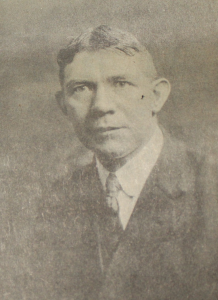
A couple of Connemara men who were working with Mattie Niland were among the Volunteers. Mattie asked the Connemara men were they coming. They said, “Where are you going?”. He replied, “To fight for Ireland”. “If you are going sticking peelers [killing policemen] we are with you”, said the Connemara lads. [8]
The separatist movement does not seem to have had the support of the Catholic clergy. Bridget Malone recalled, ‘Father Tully, the Parish Priest, prevented them from taking the barracks at Clarenbridge. He spoke to them and told them the curse of God would be on them if they used any violence.’[9]
Nor did it have the support of the rural middle class. The insurgents were, according to the local RIC, ‘persons of no importance’, ‘the agricultural class of young men and shop boys’. Most of the insurgents were either small farmers or their sons, with smaller contingents of labourers and tradesmen. Most were members of the Gaelic League but only 44% could speak Irish. Only 4% of them, the police noted, were of the ‘professional class’. [10]
In judgement of historian Fergus Campbell, ‘most of the Galway rebels had not benefited from the various Land Acts passed by the British government and considered that the land question could only be finally settled under an Irish Republic’. It was an insurrection, ‘both against the British state and the landlords who owned the thousands of acres of grazing land around their smallholdings.’[11]
Central IRB leadership was provided by Liam Mellows, an activist originally from Wexford, but sent to Galway to oversee training.
The Rising

It was never that clear what the Volunteers in places like Galway were supposed to do in the insurrection of Easter 1916. They had been supposed to distribute the arms landed by the Germans on the Aud in Kerry, but these were lost on Good Friday when the ship was scuttled off Cork. Pearse had also issued vague orders to ‘hold the line of the Shannon’.
The confusion on the ground was exacerbated by the countermanding order of Eoin MacNeill who tried to call off the insurrection on Easter Sunday by cancelling the ‘mobilisation orders’ in the press.
Mellows managed to get word from IRB leaders Clarke and McDermott in Dublin on the Tuesday that, despite the countermanding order, the rising was back on. Despite the misgivings of many including the local IRB leader Tom Kenny that nothing could be achieved under the circumstances, Mellows had his orders and appeared to be determined to carry them out.
He brought out a large number of poorly armed men – up to 600 according to some reports. According to Gilbert Morrissey, ‘Each man had some sort of weapon, such as a shotgun, pike or bayonet’[12]. The Irish Times, a staunchly unionist newspaper at the time, painted a picture of an insurgent mob marching on Galway city who were turned back by the guns of a British destroyer that was anchored in Galway bay.
It was not clear what the Military Council expected the Volunteers in Galway to do but Liam Mellows brought them out in rebellion.
On Easter Tuesday 400 of the Sinn Fein party were marching on Galway city and had reached Merlin Park, the residence of Lord and Lady Waithrope… Great alarm was naturally felt and the loyal citizens got together every available firearm. The police acted splendidly and although some of the men had been on duty without sleep for 18 hours, they responded to every call. [Also] ‘A number of citizens and country gentlemen in the disturbed area armed themselves.’ However in the midst of all this excitement and bustle, the booming of the big guns rang out in the bay and Galway was saved.’ [13]
The picture painted by the insurgents themselves however is much more chaotic. There was no attempt to march on Galway city. They simply had little idea what to do in the absence of sufficient arms or a clear plan. Despite the remonstrations of the local priest Father Tully, they attacked Clarnbridge RIC barracks but were unable to take it. At Oranmore there was another skirmish with the police and at Carnmore an RIC man was shot dead. Constable Whelan apparently called to the Volunteers ‘surrender boys I know ye all’, but was shot in the face and killed. Another was shot in an exchange of fire at Clarenbridge.[14]
However with police and military reinforcements coming out from Galway city, Mellows and his men, short by now of food, occupied first the agricultural college in Athenry and then a disused castle at Myode and a local, also deserted, country mansion named Lime Park.[15]
By the Friday, 350 Volunteers (many had already gone home by this point) under Liam Mellows were ensconced at Myode Castle and Lime Park. Even had they wanted to make an Alamo of their positions, they were not equipped to do so, with only 50 rifles between them.
At this point they heard the news of the arrival of a British warship in Galway bay, which landed 200 Royal Marines and which began shelling the area (this was in fact at the end of the week, not as the Irish Times imagined at the beginning). Liam Mellows wanted to ‘fight it out until the end’, but a sympathetic priest, Father Fahy persuaded them they had, “made their gesture and must preserve their lives for the next fight”.[16]
Aftermath
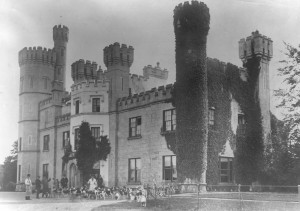
The dispersed on Saturday April 29th, the same day as Pearse’s surrender in Dublin. Martin Newell recalled,
We disbanded. I went home and then went on the run. I evaded arrest until the morning of 12th May when I was arrested and taken to Moyvilla R.I.C. barracks; from there on the same day I was taken to Athenry Barracks, later the same day, I was taken by train to Broadstone Station, Dublin, and marched by the back streets to Richmond Barracks.[17]
Mellows and Tom Kenny escaped, eventually to America, but many others did not. Gilbert Morrissey and his brothers evaded arrest for a few days, but he was,
‘captured in the general round up by police and British forces that had landed at Galway. Myself and three other brothers were taken to Galway jail, also all the company and several others who were in sympathy with us. After a week I was sent to Richmond Barracks, Dublin; from there with 200 others marched to the North Wall and put on a cattle boat for Glasgow.’ [18]
Some portions of the Galway population were hostile to the rebels, others more supportive.
As happened elsewhere in the provinces the National Volunteers, – the force aligned to the Irish Party – actually mobilised to aid the British forces. In Galway, the Craughwell company of the National Volunteers offered their services to the RIC and hid out in the barracks there while the town was occupied by the rebels.[19] In Galway city where some of the prisoners were taken, they were ‘pelted with mud off the streets’ by the separation women and Galway County Council passed a motion rejoicing ‘that this dastardly attempt has failed’.[20]
However the RIC noted that in the areas where the IRB was strong, around Athenry, Craughwell and Loughrea, many locals supported the rebels and in the area around Gort and Tuam too, many of the young men ‘were guilty of overt acts of rebellion’.[21]
As elsewhere in Ireland, it was not long before the British reaction to the Rising helped to transform public opinion. The final word, perhaps on 1916 in Galway should be left to the RIC;
‘the alleged excesses committed by the military in Dublin and the executions of the leaders of the insurrection, subsequently stirred up a considerable amount of sympathy with the rebels, even among persons who were hitherto regarded as loyal’.[22]
References
[1] Fearghal McGarry, The Rising, Ireland Easter 1916, p231
[2] http://www.census.nationalarchives.ie/exhibition/galway/main.html
[3] Martin Newell BMH WS 1562
[4] Newell BMH
[5] Gilbert Morrissey, Witness Statement BMH WS 874
[6] Newell BMH
[7] Gilbert Morrissey BMH WS 874
[8] Bridget Malone BMH WS 617
[9] Malone BMH
[10] Fergus Campbell, Land and Revolution, (Oxford 2008), p218-219
[11] Campbell p220
[12] Gilbert Morrissey BMH
[13] Irish Times May 8 1916
[14] McGarry, the Rising p234
[15] Newell BMH
[16] Fergus Campbell, Land and Revolution, (Oxford 2008) p217, See also Fearghal McGarry, The Rising, p243
[17] Newell BMH
[18] Morrissey, BMH
[19] Campbell, Land and Revolution, p215
[20] Campbell p221
[21] Campbell p221
[22] Campbell p222